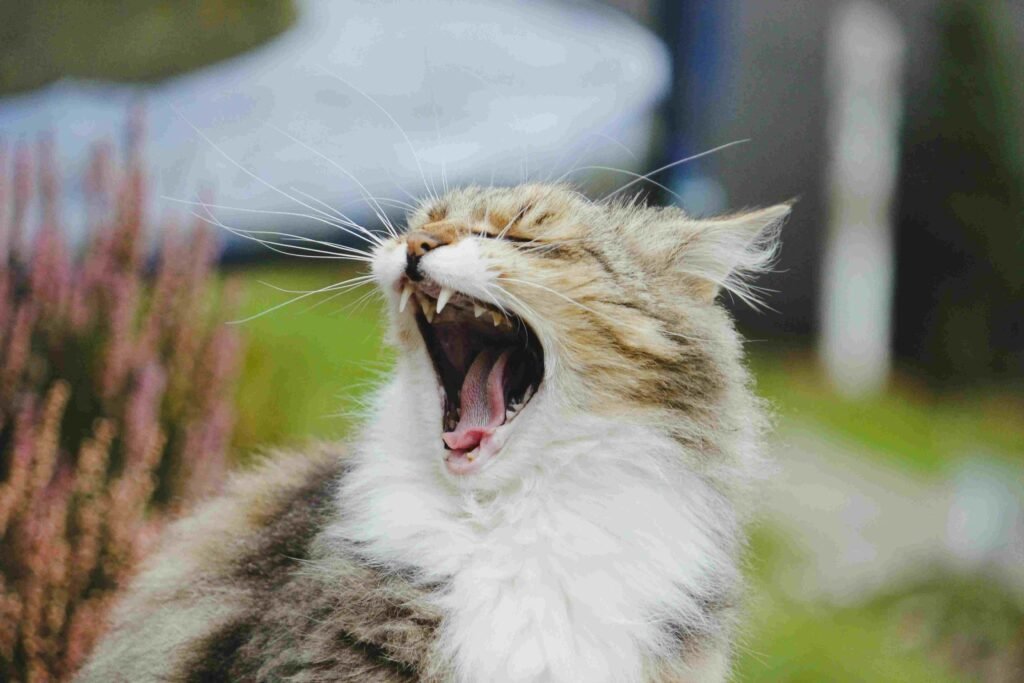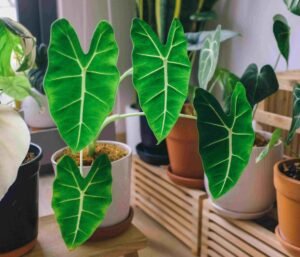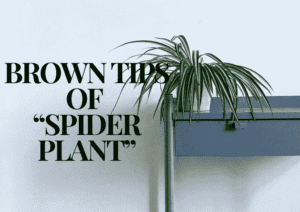Welcome to our comprehensive guide on the safety of snake plants for cats. Snake plants, also known as Sansevieria or mother-in-law’s tongue, are a popular choice for many households due to their striking appearance and easy care. Why are Snake Plants toxic to Cats? What are the toxicity of it?
In this guide, we’ll delve into the details of snake plant toxicity and what it means for your cat. We’ll cover everything from the symptoms of plant poisoning to preventive measures, and even suggest some cat-friendly plant alternatives. By the end of this article, you’ll have all the information you need to make an informed decision about keeping snake plants in your home. So, let’s get started and ensure both your plants and pets can coexist happily and healthily!
Are snake plants toxic to cats?
Understanding Plant Toxicity
Before we dive into the specifics of snake plants, let’s take a moment to understand what plant toxicity really means. You might be wondering, “What makes a plant toxic, and how does it affect my cat?” Well, plant toxicity refers to the presence of harmful substances in certain plants that can cause adverse reactions if ingested by pets or humans.
When it comes to our furry friends, cats are especially curious creatures. They love to explore their surroundings, often nibbling on plants as part of their investigation. Unfortunately, not all plants are safe for them. Toxic plants can cause a range of symptoms, from mild discomfort to severe health issues.
Common signs of plant poisoning in cats include nausea, vomiting, diarrhea, and drooling. In more severe cases, they might experience lethargy, difficulty breathing, or even organ failure. It’s important to note that the severity of the symptoms can vary based on the type of plant and the amount ingested.
Knowing which plants are toxic to your pets is crucial for their well-being. By being informed, you can create a safer environment for your cats, reducing the risk of accidental poisoning. In the next sections, we’ll take a closer look at the snake plant and determine whether it poses a threat to your feline friends. So, keep reading to learn more about how to keep your cats safe while enjoying the beauty of indoor plants!
Snake Plant Overview
Let’s dive into the world of the snake plant, also known as Sansevieria or mother-in-law’s tongue. If you’re a fan of houseplants, chances are you’ve encountered this striking plant with its tall, upright leaves and vibrant green patterns. Snake plants have become a staple in many homes, and for good reason!
First off, let’s talk about what makes the snake plant so appealing. Whether you have a bright, sunny window or a dimly lit corner, the snake plant can adapt and grow with minimal fuss. They’re also known for being low-maintenance, making them perfect for both seasoned plant enthusiasts and beginners alike.
But the benefits of snake plants don’t stop there. One of the standout features of these plants is their ability to purify the air. Snake plants are known to remove toxins such as formaldehyde, benzene, and trichloroethylene from the air, helping to create a healthier indoor environment. Plus, they release oxygen at night, which can even improve your sleep quality if you keep one in your bedroom.
So, it’s no wonder that snake plants are a popular choice for indoor greenery. Their aesthetic appeal, coupled with their air-purifying properties and ease of care, make them a fantastic addition to any home. However, if you’re a cat owner, there’s an important aspect you need to consider: the safety of your furry friend. Let’s explore this crucial topic in the next section.

Are Snake Plants Toxic to Cats?
Now, let’s address the burning question: are the snake plants toxic to cats? The short answer is yes, but let’s break it down a bit more.
Snake plants contain a substance called saponins. Saponins are natural chemicals found in many plants, and while they serve a protective role for the plant, they can cause problems if ingested by pets. When a cat nibbles on a snake plant, these saponins can irritate their digestive system, leading to some unpleasant symptoms.
But don’t panic just yet! While snake plants are indeed toxic to cats, the good news is that they’re considered to be mildly toxic. This means that while your cat might experience some discomfort, it’s unlikely to be life-threatening in most cases. Common symptoms include nausea, vomiting, and diarrhea—basically, your cat might feel pretty crummy for a while, but they should recover with some care and attention.
It’s also worth noting that cats are generally pretty good at self-regulating when it comes to eating things they shouldn’t. They might take a nibble out of curiosity, but they usually won’t consume large amounts. However, every cat is different, and some might be more adventurous (or less discerning) than others.
Understanding the potential risks is the first step in keeping your feline friend safe. In the next section, we’ll go over the specific symptoms to watch out for and what to do if your cat has a run-in with a snake plant. Stay tuned!
Symptoms of Snake Plant Poisoning in Cats
So, what happens if your curious kitty takes a bite of your snake plant? It’s important to recognize the symptoms of snake plant poisoning, so you can act quickly and keep your cat comfortable.
When a cat ingests part of a snake plant, the saponins in the plant can cause a range of symptoms. The most common ones include:
- Nausea: Your cat might seem a bit off, refusing food or acting lethargic.
- Vomiting: This is a pretty clear sign that something isn’t sitting right in their stomach. You might notice your cat throwing up soon after eating the plant.
- Diarrhea: Just like vomiting, diarrhea is a sign that your cat’s digestive system is irritated.
- Drooling: If you see your cat drooling more than usual, it could be a reaction to the plant’s toxins.
- Abdominal pain: Your cat might show signs of discomfort, like hunching over or being sensitive to touch around their stomach.
- Lethargy: Your usually energetic cat might become unusually tired or sluggish.
While these symptoms can be distressing to see, they’re typically mild and should pass with time. However, it’s important to monitor your cat closely. If the symptoms seem severe or if your cat doesn’t start to improve after a day or so, it’s time to call your vet. In rare cases, cats can have more serious reactions, and it’s always better to be safe than sorry.
Remember, your vet is your best resource for advice and care if your cat has ingested a snake plant. They can provide guidance on how to help your cat feel better and ensure there’s no serious harm done.
In the next section, we’ll cover what immediate steps you should take if you suspect your cat has eaten part of your snake plant. Stay with us!
What to Do If Your Cat Ingests a Snake Plant
If you suspect your cat has taken a nibble of your snake plant, don’t panic. Here’s what you should do to help your furry friend feel better:
- Assess the Situation: Try to determine how much of the plant your cat has eaten. If it’s just a small bite, the symptoms are likely to be mild. However, if your cat has consumed a larger amount, you’ll need to be more vigilant.
- Remove Access: Move the snake plant out of reach to prevent your cat from eating more of it. Place it in a room your cat can’t access or elevate it to a high shelf.
- Watch for Symptoms: Keep an eye on your cat and look for signs of poisoning such as vomiting, diarrhea, drooling, or lethargy. Remember, these symptoms are usually mild but can still be uncomfortable for your cat.
- Offer Water: Encourage your cat to drink water. Staying hydrated can help flush out the toxins from their system.
- Contact Your Vet: If your cat shows severe symptoms or doesn’t start to improve after a day, give your vet a call. They can provide specific advice based on your cat’s condition and may recommend bringing them in for a check-up.
- First-Aid Tips: If you can’t reach your vet right away, here are a few things you can do:
- Don’t induce vomiting: Unless instructed by a vet, it’s best not to try and make your cat vomit.
- Monitor Their Behavior: Keep a close watch on your cat’s behavior and note any changes. This information will be helpful if you need to consult your vet.
- Comfort Your Cat: Provide a quiet, comfortable space for your cat to rest and recover.
Remember, while snake plant poisoning is usually not life-threatening, it’s always better to err on the side of caution. Your vet is the best source of guidance and support in these situations.
In the next section, we’ll talk about how to prevent your cat from munching on your houseplants in the future. Stick with us for some helpful tips!
Preventing Snake Plant Poisoning
Now that we know snake plants can be a bit risky for our feline friends, let’s talk about how to keep your cat safe while still enjoying your greenery. Here are some practical tips to prevent your cat from munching on your houseplants:
- Place Plants Out of Reach: One of the simplest solutions is to put your snake plant in a spot your cat can’t access. High shelves, hanging planters, or rooms that are off-limits to your cat are great options.
- Use Plant Deterrents: There are several cat-safe sprays available that can deter your cat from getting too close to your plants. These sprays usually have scents that cats find unpleasant but are harmless to them.
- Provide Cat-Friendly Alternatives: Sometimes, cats chew on plants out of boredom or curiosity. Give your cat their own plant to chew on, like cat grass or catnip. These are safe for cats and can satisfy their urge to nibble.
- Create a Distraction: Make sure your cat has plenty of toys and activities to keep them occupied. A bored cat is more likely to get into mischief, so interactive toys, scratching posts, and playtime can help divert their attention from your plants.
- Train Your Cat: Training your cat to stay away from plants can be effective, though it may take some patience. Use positive reinforcement to teach your cat to avoid certain areas or objects. For example, you can use treats to reward your cat for staying away from your plant shelf.
- Barrier Methods: Physical barriers like plant cages or decorative fencing around your plants can also work. This adds an extra layer of protection and keeps curious paws at bay.
- Rotate Your Plants: If you have a curious cat, consider rotating your plants in and out of accessible areas. This way, you can still enjoy your plants without constantly worrying about your cat getting into them.
By taking these preventive measures, you can enjoy the beauty of your snake plant while keeping your cat safe and healthy. In the next section, we’ll explore some cat-friendly plant alternatives that can bring just as much joy to your home without the worry of toxicity. Keep reading!
If you’re worried about keeping snake plants around your cat, don’t worry! There are plenty of beautiful, non-toxic plants that can add greenery to your home without posing any risk to your furry friend. Let’s explore some of these safe and stylish alternatives:
Here’s a list of cat-friendly plants:
- Spider Plant (Chlorophytum comosum)
- Areca Palm (Dypsis lutescens)
- Boston Fern (Nephrolepis exaltata)
- Calathea (Calathea spp.)
- African Violet (Saintpaulia)
- Parlor Palm (Chamaedorea elegans)
- Bamboo Palm (Chamaedorea seifrizii)
- Haworthia (Haworthia spp.)
- Ponytail Palm (Beaucarnea recurvata)
- Polka Dot Plant (Hypoestes phyllostachya)
Want to know about cat friendly indoor plants?
Conclusion
So there you have it—a thorough guide to understanding whether the snake plant is safe for your feline friend and how to manage any potential risks. While snake plants do contain toxins that can upset your cat’s stomach, the good news is that most cases of poisoning are mild and manageable with a bit of attention and care.
By keeping a close eye on your cat and taking immediate action if they do nibble on a snake plant, you can help them feel better and avoid any serious issues. And if you’d rather play it safe, there are plenty of cat-friendly plants out there that can add beauty and greenery to your home without any worries.
Remember, the key to a happy home with both pets and plants is to stay informed and proactive. With the right precautions, you can enjoy your houseplants while keeping your furry friends safe and healthy.
Thanks for joining us on this journey to make your home a safe and beautiful space for both you and your pets. If you have any more questions about plant safety or need more tips on cat-friendly plants, feel free to reach out. Happy planting, and here’s to a harmonious home filled with joy and greenery!
FAQs
1.Are Snake Plants toxic to Cats?
Ans is YES. Snake plants are toxic to cats if it ingest part of it.
2. Why are Snake Plants toxic to Cats?
Snake plants are toxic to cats because it whole body contains a toxic compound called saponin
3. How can I keep my cat away from my snake plant?
You can keep your cat away from your snake plant by placing it out of reach, using cat-safe deterrent sprays, providing alternative plants like cat grass, and offering plenty of toys and activities to keep your cat occupied.
4. Are there any plants that are completely safe for cats?
Yes, there are several plants that are completely safe for cats. Some examples include Spider Plant, Areca Palm, Boston Fern, Calathea, African Violet, Parlor Palm, Bamboo Palm, Haworthia, Ponytail Palm, and Polka Dot Plant.
5. Can a small amount of snake plant cause serious harm to my cat?
In most cases, a small amount of snake plant will cause mild discomfort rather than serious harm. Symptoms like vomiting and diarrhea are usually temporary. However, if your cat shows severe symptoms or if you’re unsure, it’s always best to consult your vet.
6. How do I know if my cat is experiencing plant poisoning?
Signs of plant poisoning in cats can include nausea, vomiting, diarrhea, drooling, abdominal pain, and lethargy. If you notice any of these symptoms, especially after your cat has been around a snake plant, it’s important to seek veterinary advice.
7. Can I grow snake plants if I have cats?
Yes, you can grow snake plants if you have cats, but it requires extra precautions to ensure your cat doesn’t chew on them. Consider placing the plants in inaccessible areas or using deterrents to keep your cat away.
8. What should I do if I can’t reach a vet immediately?
If you can’t reach a vet right away, monitor your cat closely, keep them hydrated, and avoid inducing vomiting unless instructed by a vet. Make a note of your cat’s symptoms to provide detailed information when you do contact a vet.




